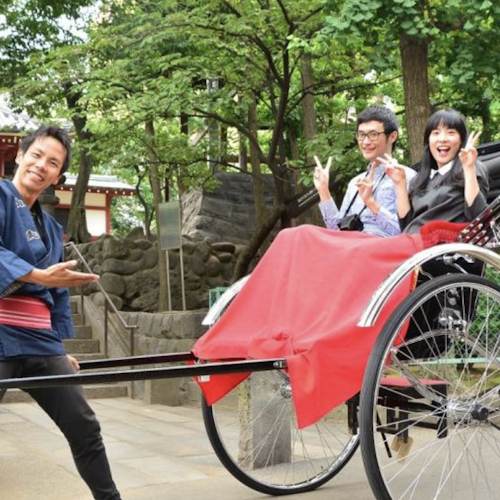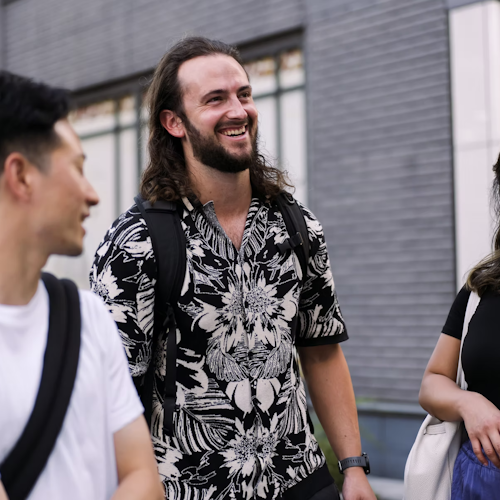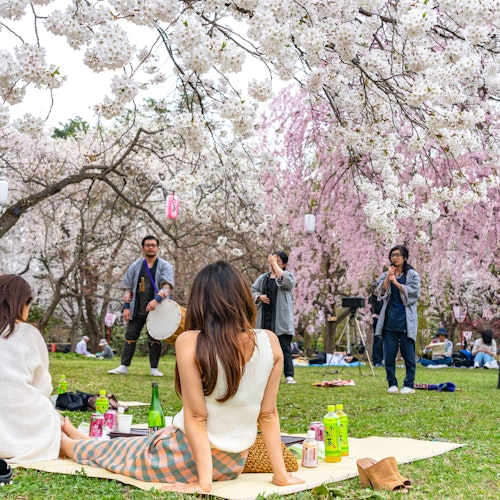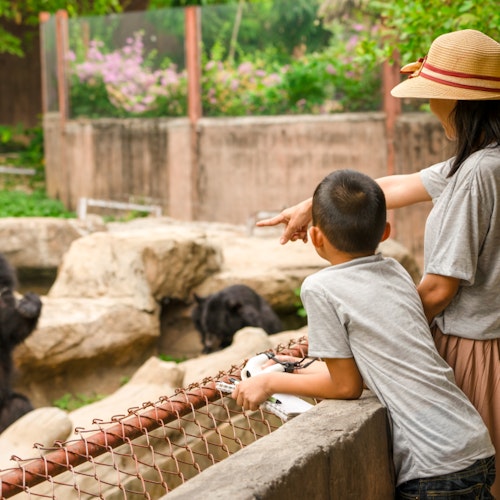
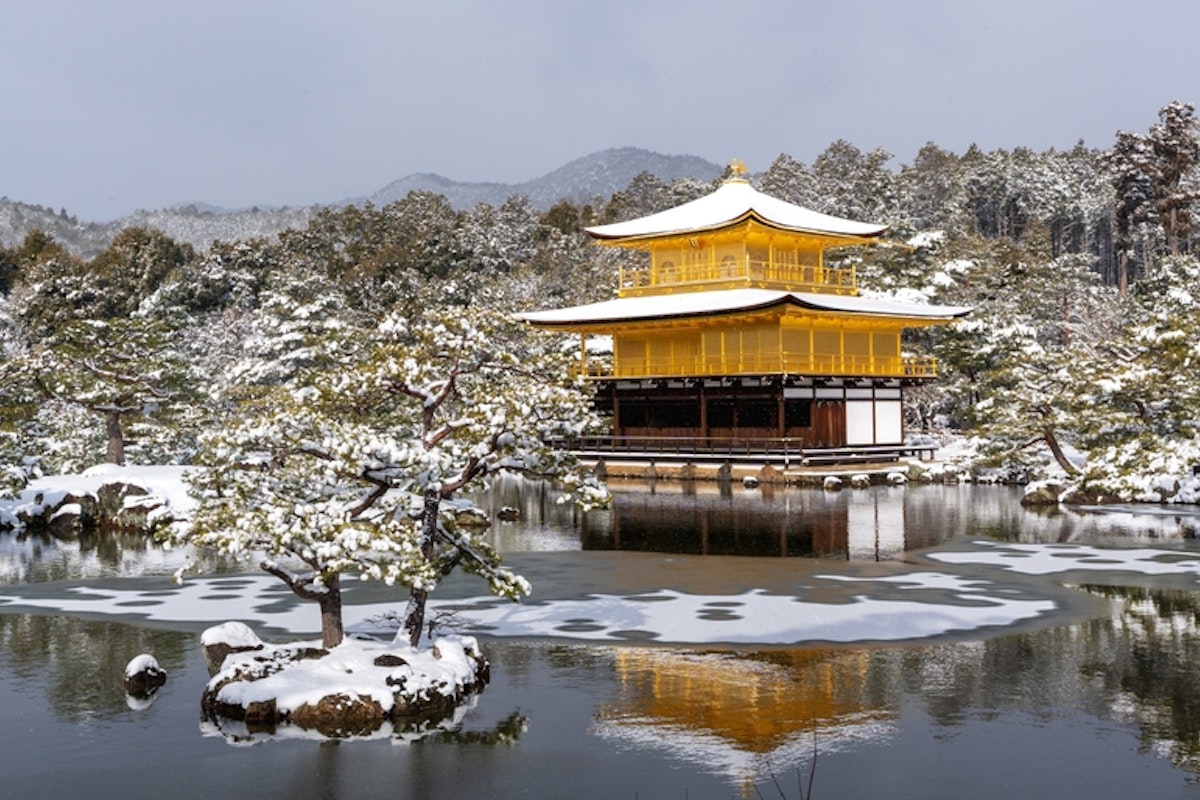
Kyoto, located in Kyoto Prefecture, once the capital of Japan, embodies the country's rich history and traditional culture. It's a must-visit destination for any traveler interested in exploring the heart of Japanese heritage.
With 17 UNESCO World Heritage Sites, more than 1600 Buddhist temples, and over 400 Shinto shrines, Kyoto showcases a variety of historical and cultural landmarks. Our journey will take us through the top ten sights in Kyoto, starting from the iconic Golden Pavilion to the tranquil Philosopher's Path.
Each site offers unique insight into Japan's past and present, providing an immersive experience beyond typical tourist attractions.
The Fushimi Inari Shrine, dedicated to the Shinto god of rice, Inari, is one of Kyoto's most iconic and revered sites. Known for its seemingly unending path of over 10,000 vibrant vermilion torii gates, which trail through the wooded forest of Mount Inari, the shrine presents a visually stunning spectacle.
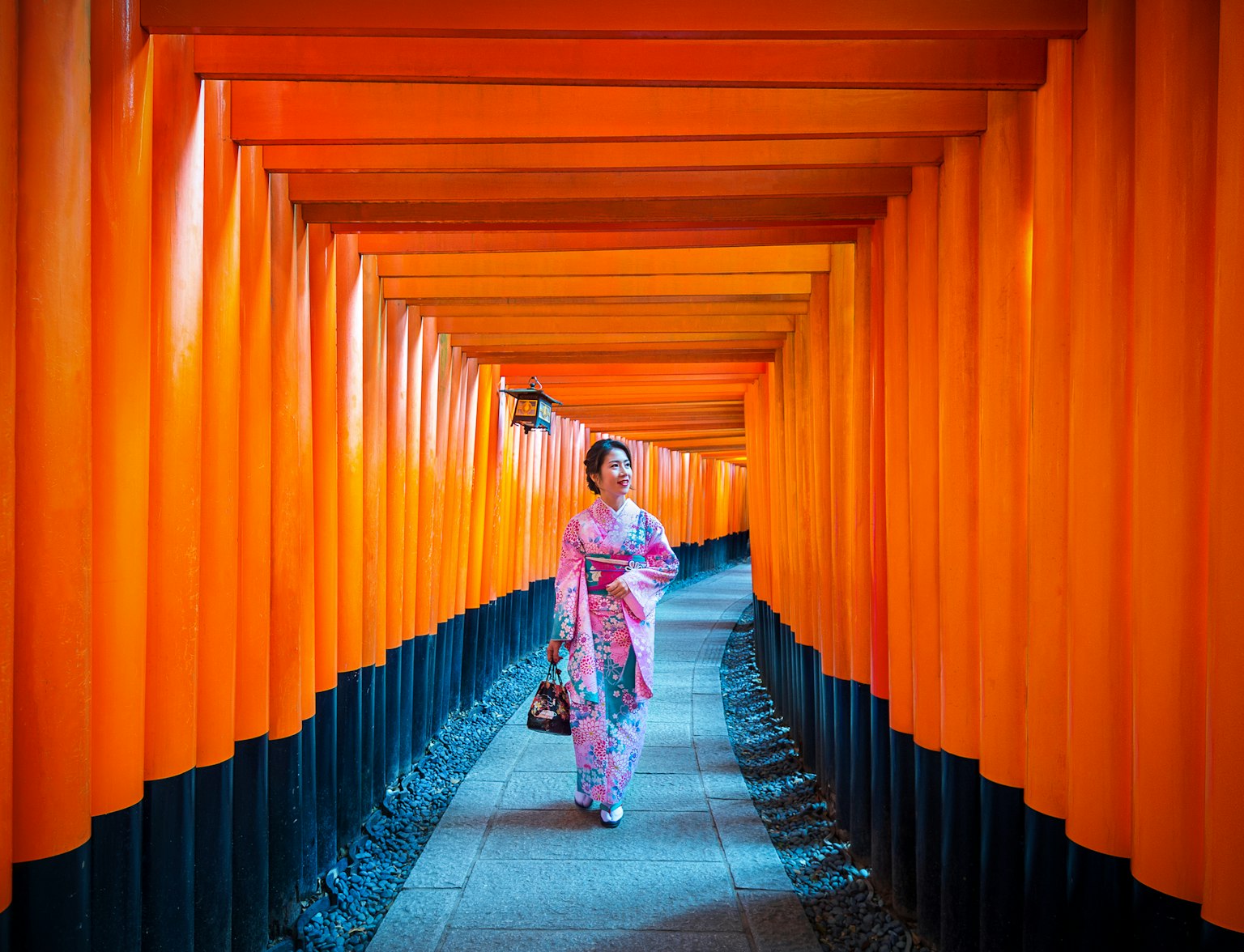
Explore the hidden trails of Fushimi Inari on our exclusive 3-hour guided hike.
Donated by individuals and businesses hoping for prosperity, these gates create a mesmerizing tunnel-like effect. The hike up the mountain takes about 2-3 hours and offers various lookout points for breathtaking views of Kyoto.
Address: 68 Fukakusa Yabunouchicho, Fushimi Ward, Kyoto, 612-0882, Japan
Opening Hours: Open 24 hours, best visited early morning or late evening to avoid crowds
How to Get There: A 5-minute walk from JR Inari Station on the JR Nara Line
Arashiyama Bamboo Grove is one of Kyoto's most enchanting and photographically rewarding sites. Walking through this dense bamboo forest, visitors are enveloped in a green canopy, creating a sense of otherworldly tranquility.
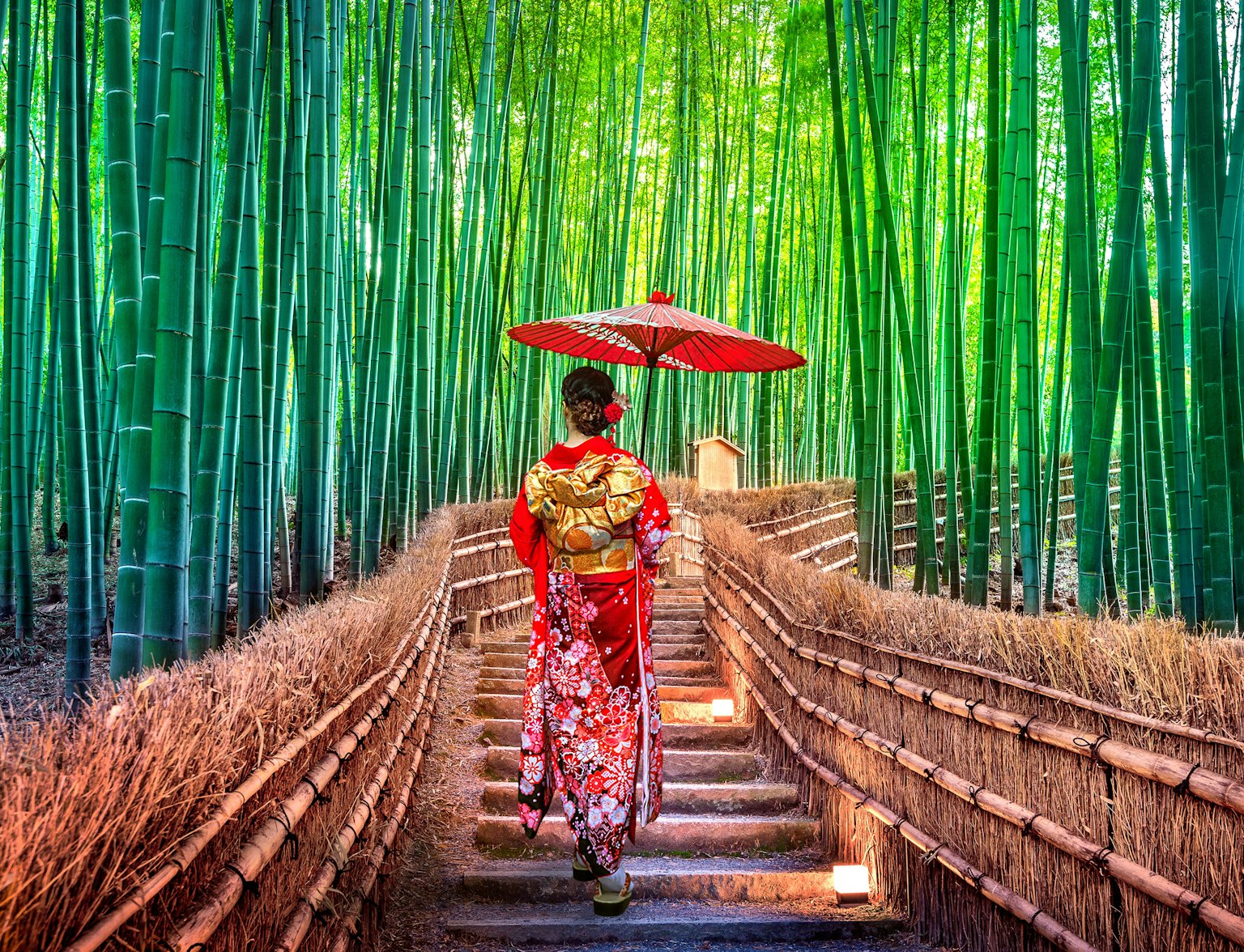
Step into the heart of Japan with an exclusive, private tour of Arashiyama.
The sun filters through the tall bamboo stalks, creating soft light and a serene atmosphere. The path through the grove is relatively short and can be combined with a visit to the nearby Tenryu-ji Temple or the scenic Togetsukyo Bridge.
Early morning visits are recommended for a more peaceful experience, as the grove can get crowded during the day.
Address: Ukyo Ward, Kyoto, 616-0000, Japan
Opening Hours: Open 24 hours, best visited early in the morning
How to Get There: A 10-minute walk from Arashiyama Station on the Keifuku Arashiyama Line
Kinkaku-ji, also known as the Golden Pavilion, is a Zen Buddhist temple one of Kyoto's most picturesque and popular attractions. The top two floors of this stunning structure are entirely covered in gold leaf, which brilliantly reflects in the pond below and symbolizes purity.
Originally a shogun's retirement villa, it was converted into a temple after his death.
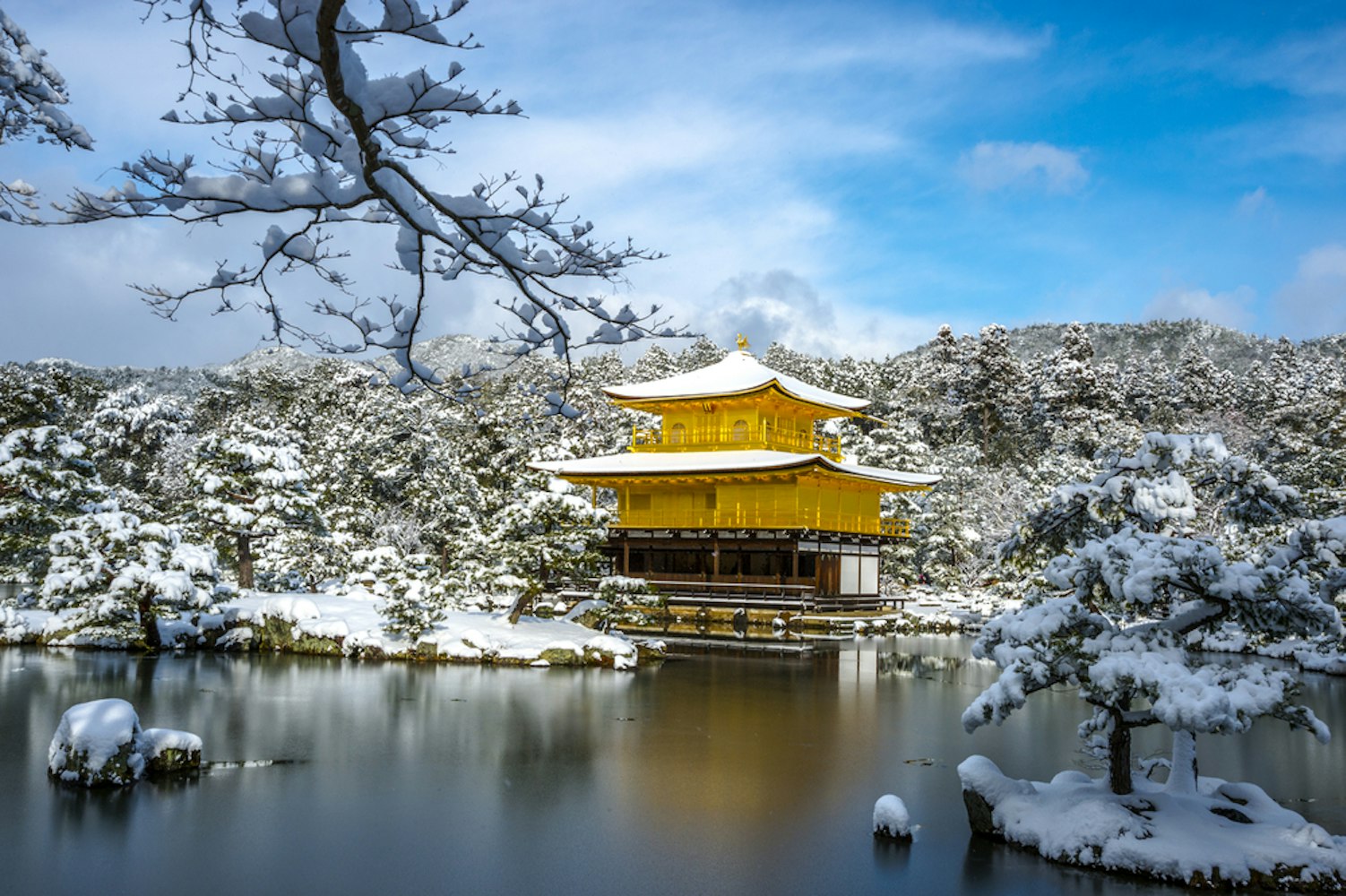
The temple complex is set within a beautifully designed garden, representing the harmonious blend of heaven and earth, a fundamental principle in Zen philosophy. Despite its crowdedness, Kinkaku-ji exudes a serene and almost otherworldly beauty, making it a must-visit.
Address: 1 Kinkakujicho, Kita Ward, Kyoto, 603-8361, Japan
Opening Hours: 9:00 AM - 5:00 PM daily
How to Get There: Take the Kyoto City Bus number 101 or 205 from Kyoto Station, about a 40-minute ride
Gion, located in downtown Kyoto, is Kyoto's most famous geisha district and offers a glimpse into the world of traditional Japanese entertainment and aesthetics. This historical district is characterized by its narrow lanes and traditional wooden machiya houses.
Visitors may glimpse geikos (Kyoto dialect for Geisha) and maikos (apprentice geisha) in their exquisite kimonos and makeup, especially in the early evening.

Apart from its cultural richness, Gion offers a variety of traditional tea houses and restaurants where visitors can experience kaiseki dining and tea ceremonies. The district's preservation as a historical area allows for an immersive journey into old Kyoto, making it a cultural gem.
Address: Gionmachi, Higashiyama Ward, Kyoto, 605-0001, Japan
How to Get There: A short walk from Gion-Shijo Station on the Keihan Line or Kawaramachi Station on the Hankyu Kyoto Line
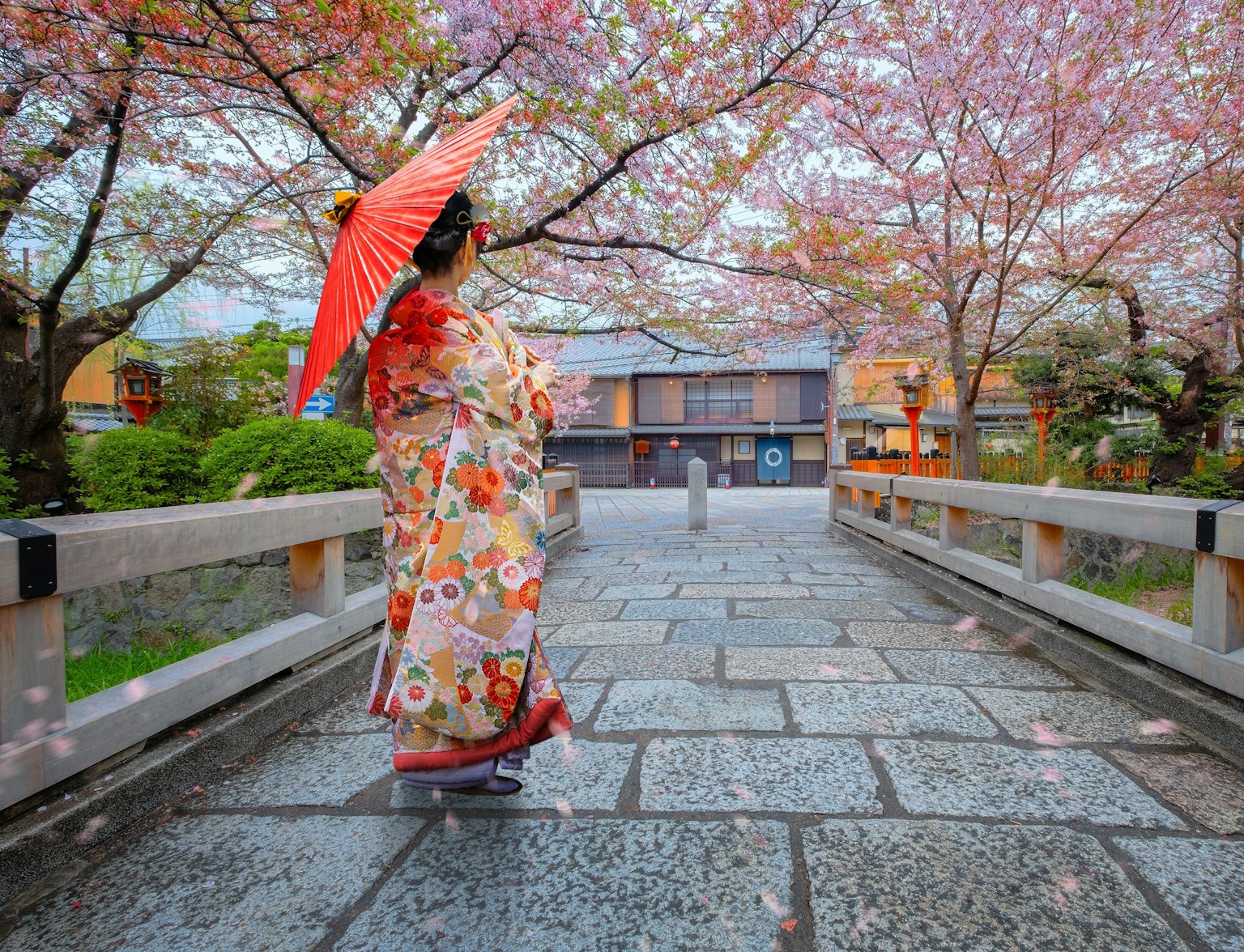
Experience the enchanting world of Gion, Kyoto's historic geisha district.
Kiyomizu-Dera, a historic temple established in 778, is renowned for its wooden stage, which juts out from its main hall 13 meters above the hillside below, offering spectacular views of Kyoto. This UNESCO World Heritage site, dedicated to the deity Kannon, was constructed without nails.
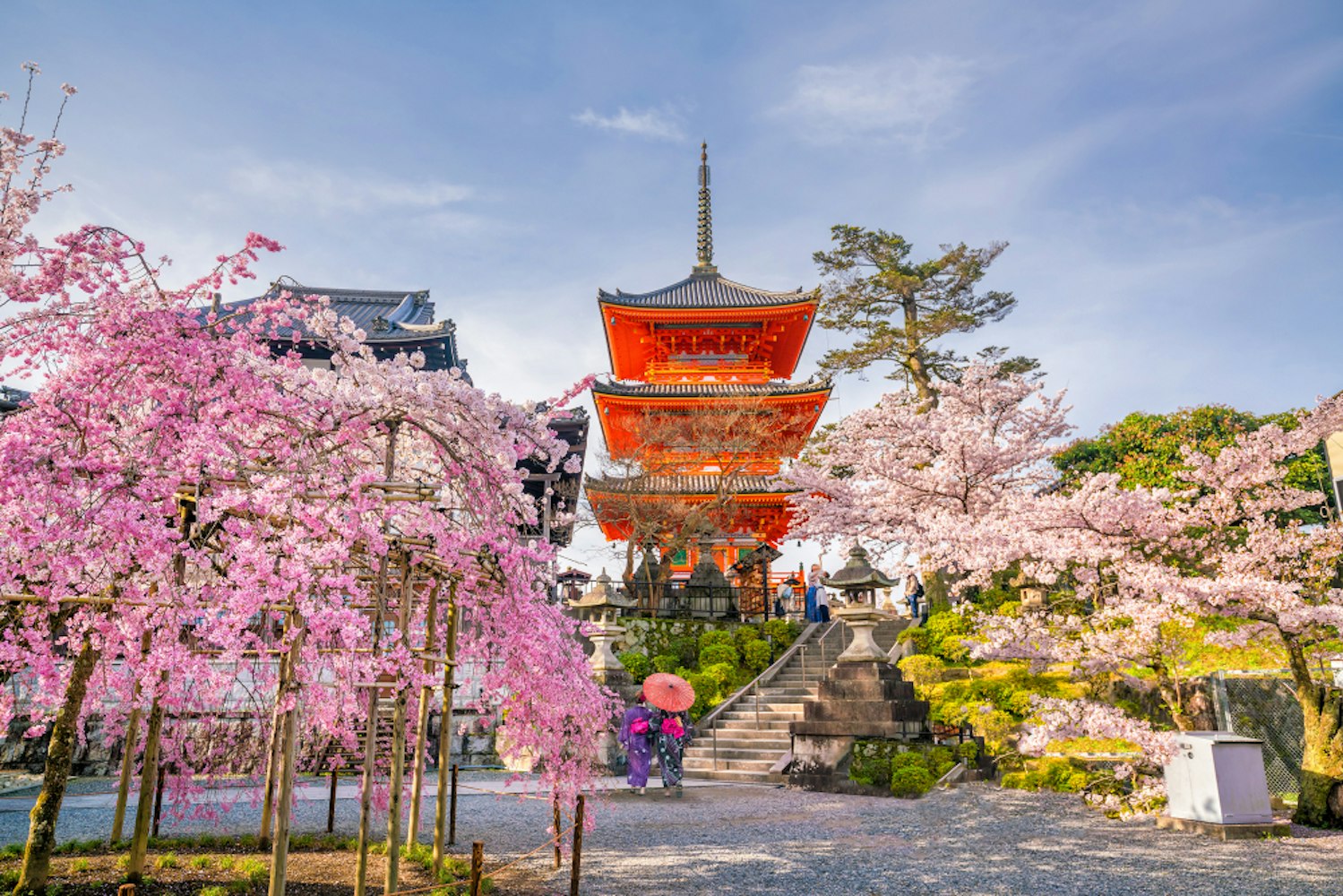
The temple complex includes several other shrines and halls, including the Jishu Shrine, dedicated to the god of love and matchmaking. A highlight is the Otowa Waterfall, where visitors drink from its waters for health, longevity, and study success.
The temple is particularly stunning during cherry blossom and autumn color seasons.
Address: 294 Kiyomizu, Higashiyama Ward, Kyoto, 605-0862, Japan
Opening Hours: 6:00 AM - 6:00 PM, varies seasonally
How to Get There: A 20-minute walk from Kiyomizu-Gojo Station on the Keihan Railway
Nijo Castle, a testament to the power of the Tokugawa shoguns during the Edo period, is distinguished by its sumptuous palace buildings, stunning gardens, and "nightingale floors" designed to chirp when walked upon, serving as a security measure against intruders.
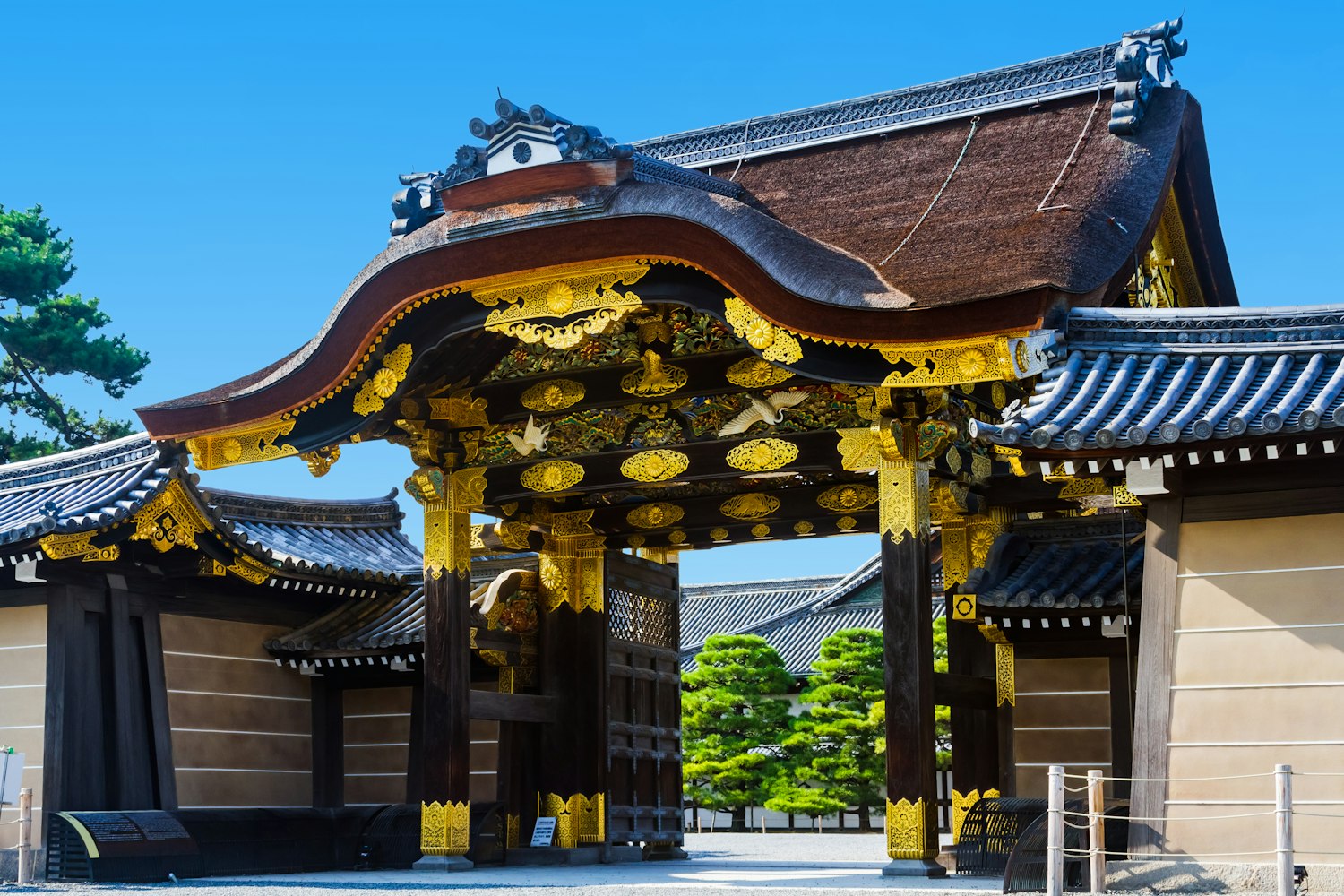
The Ninomaru Palace within the castle is notable for its ornate decorations and extensive use of gold leaf. Visitors can explore the palace rooms with beautifully painted sliding doors (fusuma) and ceilings.
The surrounding gardens blend Japanese traditional and Western styles, offering a tranquil escape from the city.
Address: 541 Nijojocho, Nakagyo Ward, Kyoto, 604-8301, Japan
Opening Hours: 8:45 AM - 4:00 PM (Entry until 4:00 PM, closes at 5:00 PM)
How to Get There: A short walk from Nijojo-mae Station on the Tozai Subway Line
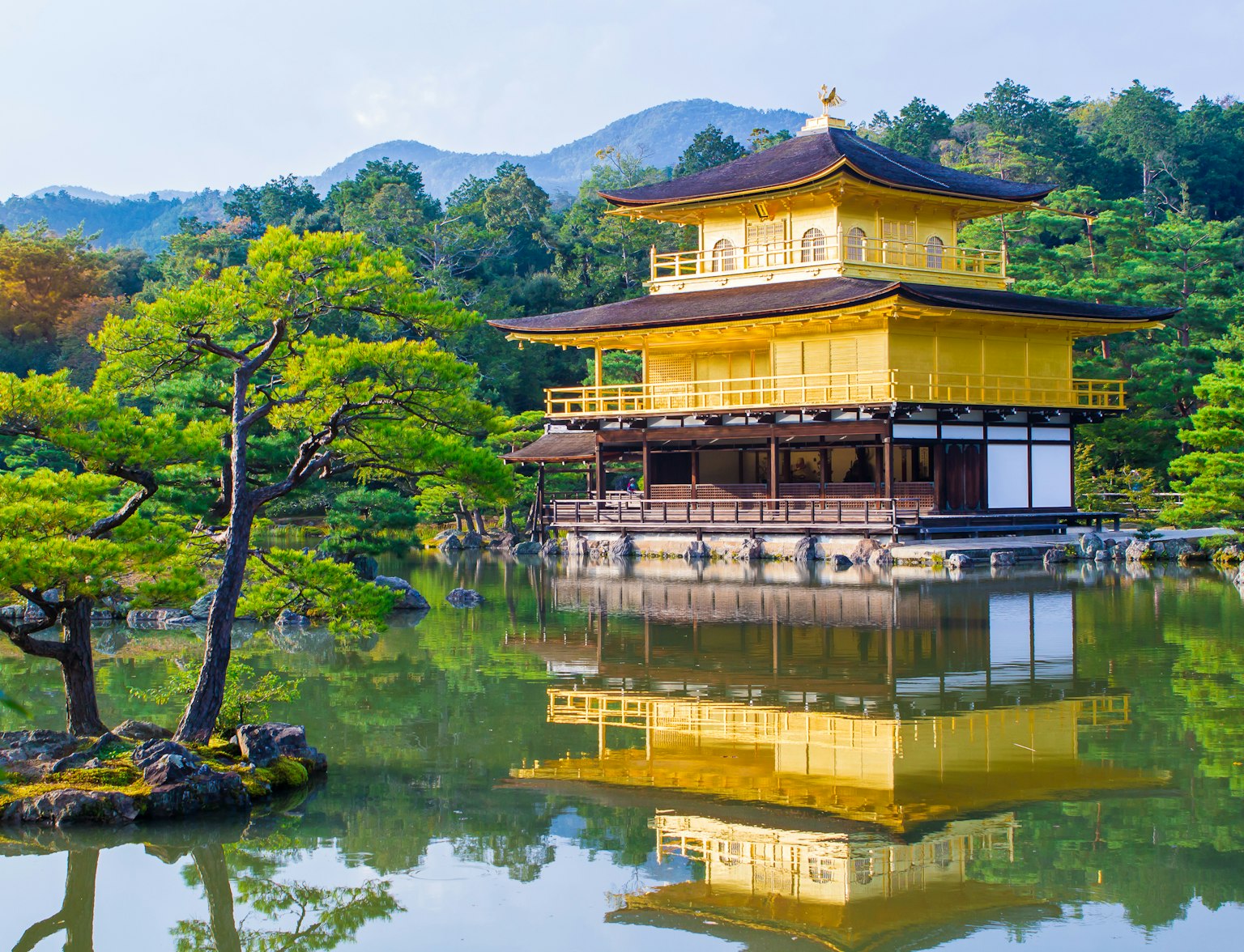
Step into the world of the Shogun, and explore Nijo Castle, a UNESCO World Heritage Site.
Ryoan-ji Temple is famous for its karesansui (dry landscape) rock garden, which is the most celebrated in Japan. The garden's fifteen rocks are arranged so that from any viewpoint, at least one rock is always hidden from the viewer.

This Zen temple's rock garden symbolizes ultimate simplicity and purity. Visitors can ponder the garden's meaning while seated on the veranda, a practice believed to aid in meditation.
The temple also features a serene pond, and the grounds are lovely during the cherry blossom season.
Address: 13 Ryoanji Goryonoshitacho, Ukyo Ward, Kyoto, 616-8001, Japan
Opening Hours: 8:00 AM - 5:00 PM (March to November), 8:30 AM - 4:30 PM (December to February)
How to Get There: A 15-minute walk from Ryoanji Station on the Keifuku Kitano Line
The Philosopher's Path is a charming stone path through the northern part of Kyoto's Higashiyama district. The path follows a canal lined by hundreds of cherry trees.
Named after the famous Japanese philosopher Nishida Kitaro, who is thought to have meditated while walking this route on his daily commute to Kyoto University, the path offers a peaceful and reflective walk.

The path is about two kilometers long and runs between Ginkaku-ji (Silver Pavilion) and Nanzen-ji temple. Along the way, there are numerous small temples, shrines, cafes, and boutiques to explore, making it a delightful journey, especially during the cherry blossom season.
Address: The path starts near Ginkaku-ji and ends in the neighborhood of Nanzen-ji, Kyoto
Opening Hours: Open 24 hours, best enjoyed during daylight hours
How to Get There: A 5-minute walk from the Ginkaku-ji-michi bus stop, accessible via bus numbers 5, 17, and 100
The Kyoto Imperial Palace, reflecting the traditional Japanese imperial court architecture, was the residence of Japan's Imperial Family until the capital shifted to Tokyo. The palace complex, characterized by its simplicity and elegance, includes several ceremonial and residential buildings.
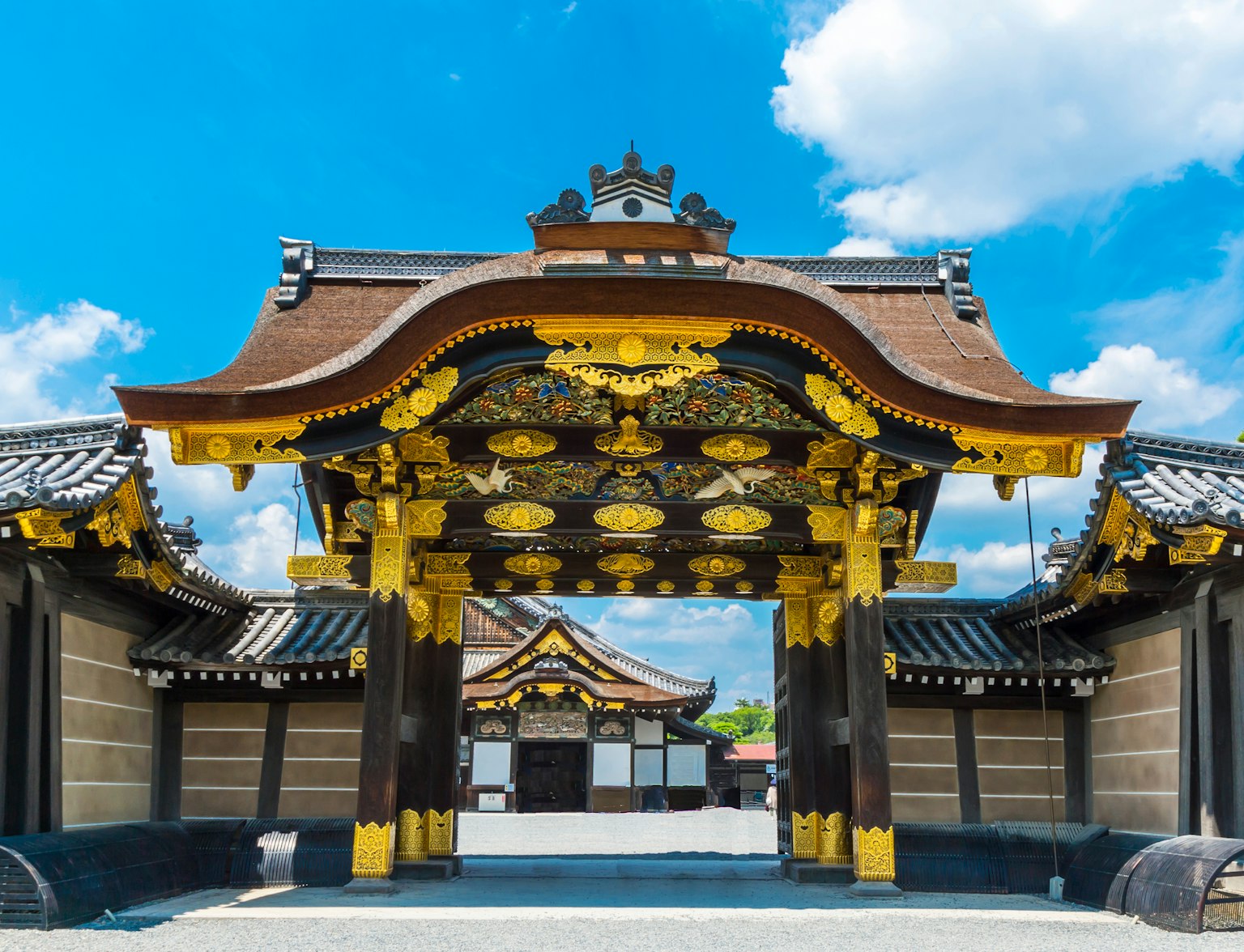
Visit Kyoto Imperial Palace with this tour.
Visitors can appreciate classical Japanese architecture, including the Shishinden (Ceremonial Hall), known for its distinctive cypress-wood roof. The beautifully maintained gardens, filled with various plants and trees, are a highlight.
Access to the palace buildings is limited, but guided tours are available to explore this historic site in greater depth.
Address: 3 Kyotogyoen, Kamigyo Ward, Kyoto, 602-0881, Japan
Opening Hours: 9:00 AM - 5:00 PM (Closed on Mondays and New Year holidays)
How to Get There: 10 minutes on foot from Imadegawa Station on the Karasuma Subway Line
Sanjusangen-do Temple is renowned for its hall, which contains 1001 statues of the Thousand-Armed Kannon. The temple's main hall, the longest wooden structure in Japan, houses these statues in a remarkable display of religious art and craftsmanship.
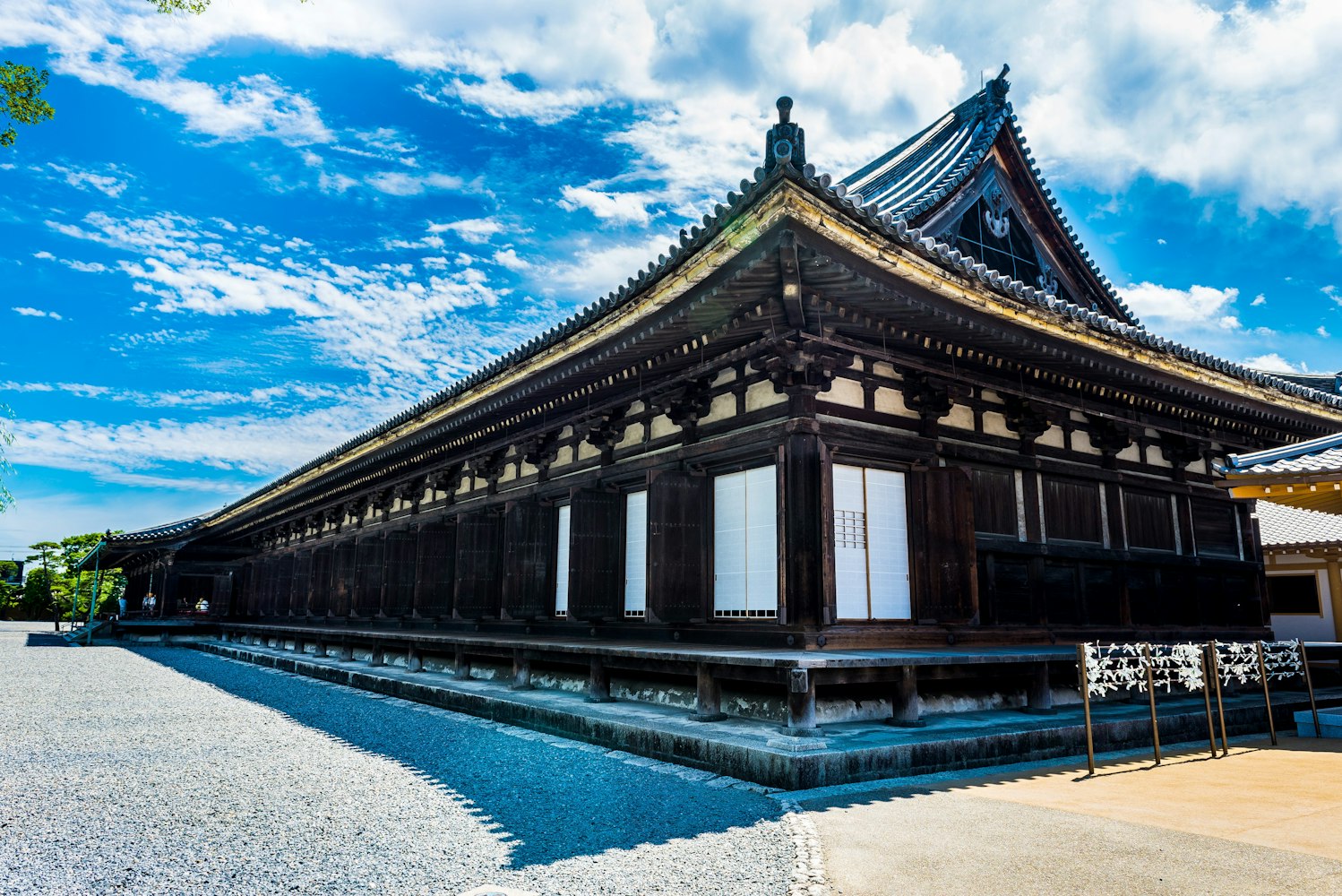
Sanjusangen-do Temple is renowned for its hall, which contains 1001 statues of the Thousand-Armed Kannon. The temple's main hall, the longest wooden structure in Japan, houses these statues in a remarkable display of religious art and craftsmanship.
The central giant Kannon statue is flanked by 1000 life-size statues, each intricately carved and unique. The temple's name, 'Sanjusangen-do,' meaning '33 intervals', refers to the number of spaces between the building's support columns.
This site is a spiritual center and a cultural treasure, showcasing the artistic heritage of the Heian period.
Address: 657 Sanjusangendo Mawaricho, Higashiyama Ward, Kyoto, 605-0941, Japan
Opening Hours: 8:00 AM - 5:00 PM (April to September), 9:00 AM - 4:00 PM (October to March)
How to Get There: A short walk from Shichijo Station on the Keihan Main Line
As our journey through Kyoto's top sights concludes, it's evident that this city is a tapestry of historical depth, cultural richness, and serene natural beauty. From the majestic architecture of ancient temples to the tranquil paths lined with cherry blossoms, Kyoto offers a unique blend of the past and the present.
Each site we've explored is not just a tourist destination; it's a chapter in Japan's long and storied history, inviting visitors to delve deeper into the country's heart.
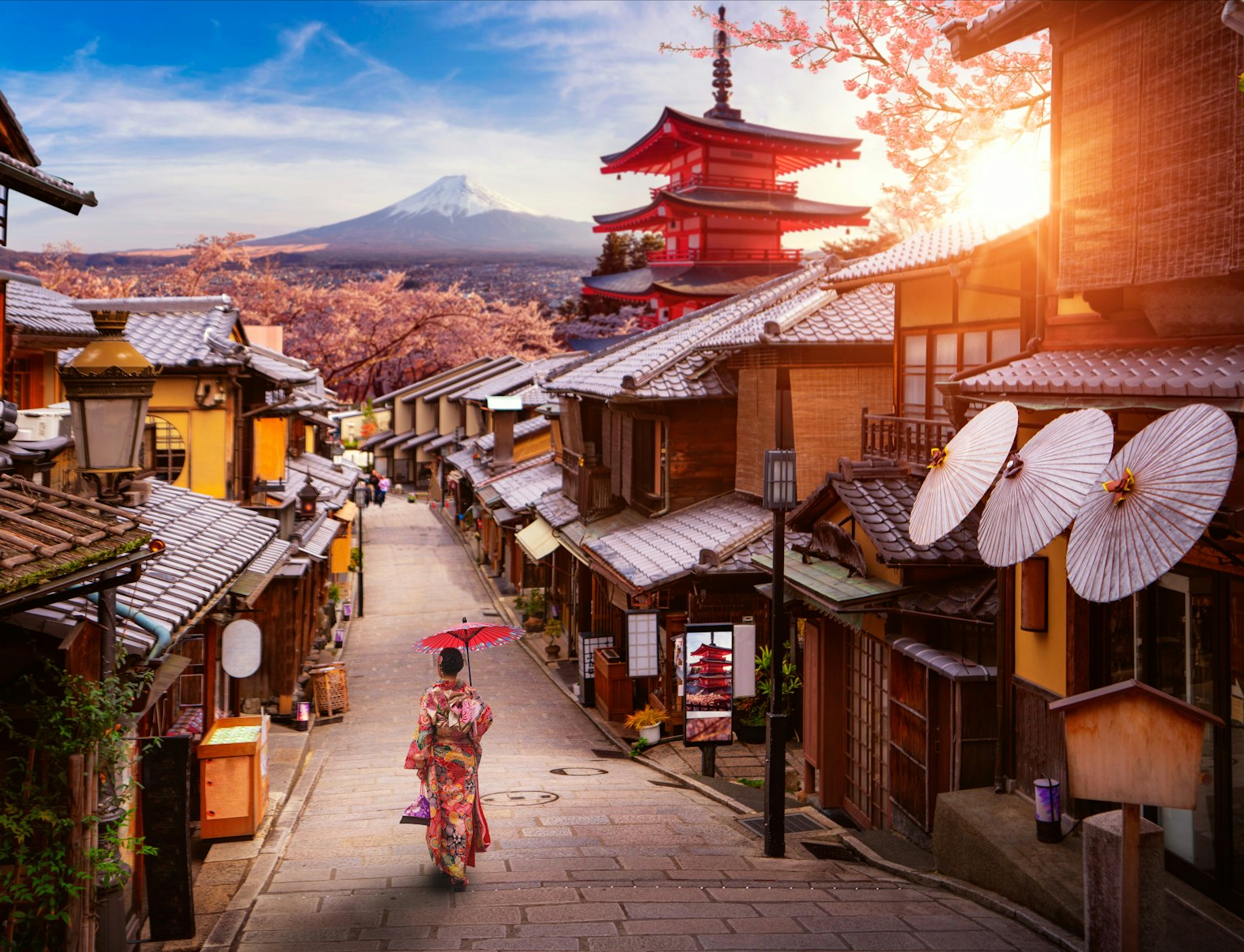
Embark on a full-day adventure in Kyoto with a Private Guide.
